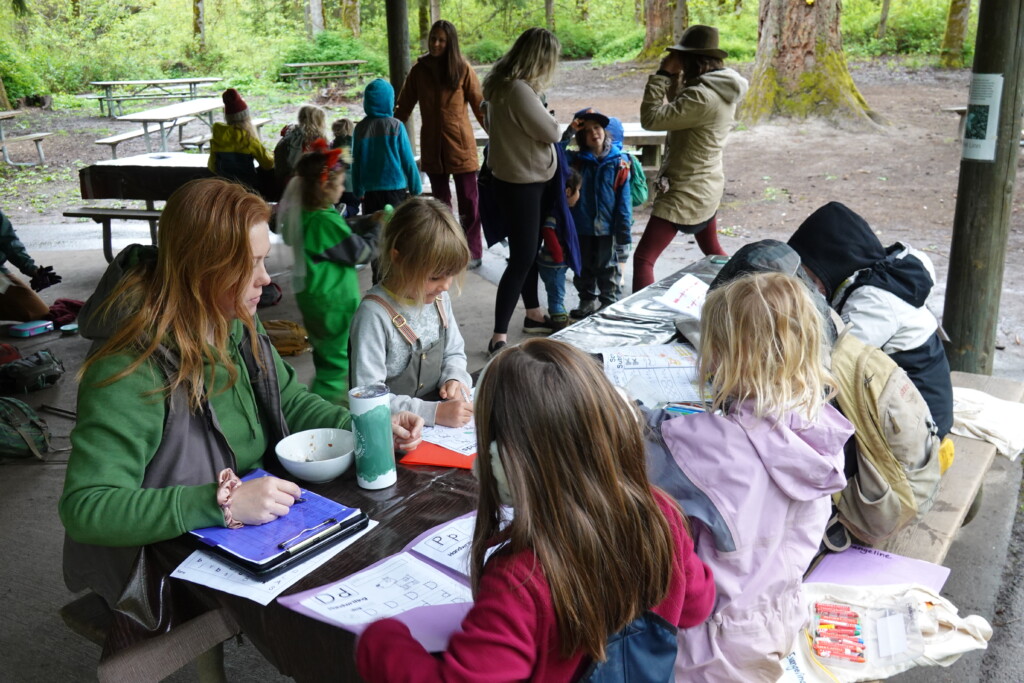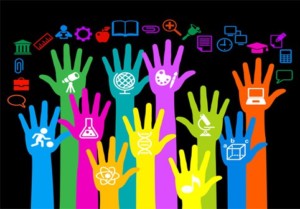Deeper Learning Requires Deeper Relationships?
Key Points
-
Nearly all school systems say that they are trying to improve the social-emotional learning skills of students, foster better relationships, and enhance feelings of belonging.
-
The learning model and relationship-building activities of deeper learning schools may show us a different path.

By: Scott McLeod
As I visit innovative elementary and middle schools across the country, I have noticed that these schools devote significant amounts of time for students and educators to simply be together in community. These time blocks are not academic. This community time is for small groups within the school to check in, share out, bond together, identify who might need support, wrestle with interesting ideas, and so on.
At Highline Big Picture Middle School in Burien, Washington, this time takes the form of a morning circle. I joined a sixth-grade class when I visited and was welcomed warmly by the students and teacher. We discussed things that were happening in our lives and answered some interesting questions, I witnessed two students resolve a lingering conflict and apologize to each other, and we learned about what each individual was thinking and feeling as we started the school day. Students initiated most of the conversations. When a small family of 18 students and a teacher talk together about non-academic matters every day for three years in middle school, those interactions morph over time into meaningful connection and interdependence, just like the small, additive conversations that we may have with our neighbors over the back fence.
Morning time looks a little different at Down to Earth Forest School in West Linn, Oregon. The nature-immersed independent school doesn’t have a building. Instead, students and educators meet each day at the city park and they start with a ‘soft open.’ Students trickle in over the first half hour of the school day, often accompanied by parents who use the time to touch base with a teacher, ask a question about their child, or see how they can help with upcoming events. Some students read a book or catch up on homework, while others play a game or work on an interesting puzzle. A few students might be playing in the woods and getting some energy out, while others sit and listen to an adult who is playing the ukulele and singing. The experience was incredibly relaxing compared to the typical start of a more traditional school day, and I found myself wishing that more schools had this type of peaceful beginning.
I have noticed that these schools devote significant amounts of time for students and educators to simply be together in community.
Scott McLeod
Morning circle time isn’t a new structure for many schools, but often the emphasis in more traditional schools is to get students settled and ready to receive instruction. Those purposes exist for the schools that I visited too, but the time felt less hectic and more oriented toward togetherness rather than simply preparing for a day’s worth of teacher-led academic experiences.
This time existing in the community can take other forms. For example, educators and students might spend the last 15 to 20 minutes of school checking in to see how the day went, decompressing, and identifying who needs support as they walk out the door and transition toward home. Rod Buenviaje, the principal of High Tech Middle Chula Vista in California, told me that teachers there might spend an entire week or two at the beginning of the school year doing community-building work before they dive into academics. Rod noted,
[Teachers are] trying to create a space where students feel safe to engage in the type of work that they’re going to be diving into. In our Humanities classes, they do a lot of work on identity. We’re trying to create a strong sense of self in our students, and it’s hard to do that if you don’t create the space that will allow for honest conversations and honest work to happen. So community building is really, really big.
The emphasis during all of these community time blocks is on relationships, well-being, and connection, which are valued for their own sake, not just as a means to some academic end.
If you ask the educators in these deeper learning schools why they devote so much time toward community, they reply that it’s about ‘relationships.’ Of course, educators in more traditional schools also claim that relationships with students are important to them, but most don’t expend nearly as much time or energy toward community-building. There seem to be both quantitative and qualitative differences in how deeper learning schools think about relationships and the time and effort spent on them. As I work to unpack those differences, I’m currently landing on the idea that the learning model of traditional schools may not actually require deep relationships with or between most students.
The typical interaction dynamic for a student in a traditional classroom often is between them, the teacher, and the academic content. Direct instruction; teacher-led discussions; call-and-response checks for understanding; tests, quizzes, essays, and digital worksheets; self-paced learning software; regurgitation of material from a textbook, website, or video… none of these require a student to interact much with anyone except the instructor or the content. Occasionally a student might do a think-pair-share with the child next to them, complete a short jigsaw activity with a few classmates, or engage in ill-structured (and thus dreaded) ‘group work’ for a couple of days. Teacher-student and student-student dynamics usually are focused on academics first, not community.
In contrast, students in deeper learning schools typically are diving into robust projects and challenges that require them to work in small teams to accomplish much deeper, more complex tasks. That collectively-owned work may take many weeks or months to complete together. Accordingly, students have to understand and be positively interdependent with each other to a much greater depth. Challenges always arise during these longer, more complex activities, and it’s imperative that students both know and trust each other as they work through the inevitable speed bumps and roadblocks. Students in deeper learning schools may spend significant time doing personality inventories, leadership profiles, strengths assessments, and other exercises that strengthen mutual understanding, relationships, and appreciation of others’ skills and talents.
Nearly all school systems say that they are trying to improve the social-emotional learning skills of students, foster better relationships, and enhance feelings of belonging. Many of them are investing tens of thousands of dollars in vendor-provided curricula to help with this work. These purchased activities then get shoehorned into existing homeroom or advisory periods, and often are perceived as inauthentic or ineffective by both students and educators. The learning model and relationship-building activities of deeper learning schools may show us a different path, one that both allows and requires students to do more than simply co-inhabit the instructional space with their fellow classmates.
Scott McLeod, J.D., Ph.D., is a Professor of Educational Leadership at the University of Colorado Denver. He is also a Senior Fellow at Getting Smart, investigating innovative elementary and middle schools that help prepare students for new pathways in high school.






0 Comments
Leave a Comment
Your email address will not be published. All fields are required.